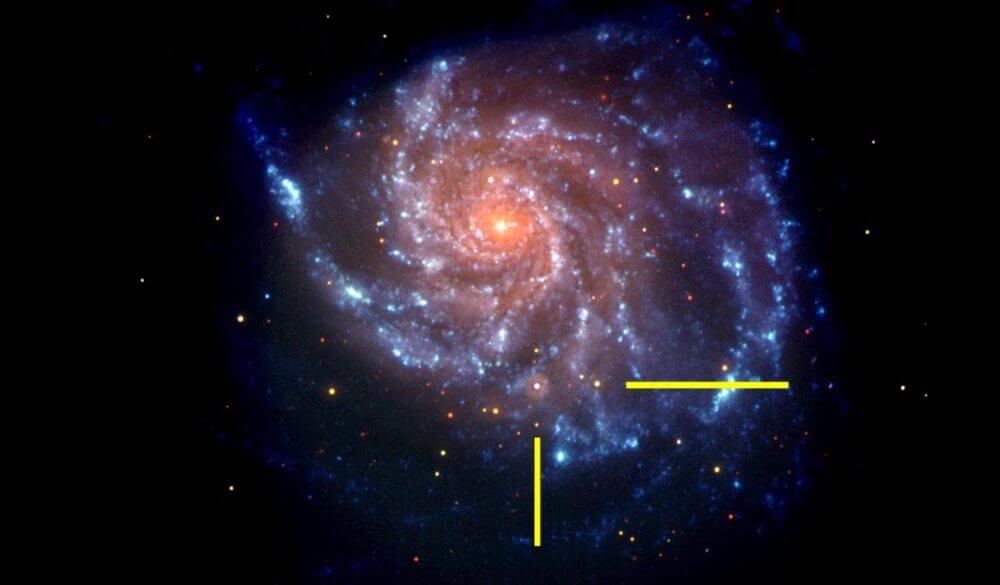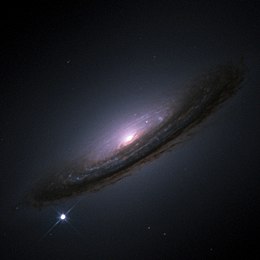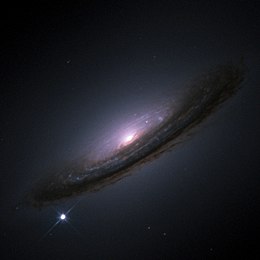Sure forms of supernovae, or exploding stars, are extra numerous than beforehand thought, a College of Arizona-led workforce of astronomers has found. The outcomes, reported in two papers printed within the Astrophysical Journal, have implications for large cosmological questions, similar to how briskly the universe has been increasing because the Huge Bang.
Most significantly, the findings trace on the risk that the acceleration of the growth of the universe won’t be fairly as quick as textbooks say.
The workforce, led by UA astronomer Peter A. Milne, found that kind Ia supernovae, which have been thought of so uniform that cosmologists have used them as cosmic “beacons” to plumb the depths of the universe, really fall into totally different populations. The findings are analogous to sampling a choice of 100-watt gentle bulbs on the ironmongery shop and discovering that they range in brightness.
“We discovered that the variations are usually not random, however result in separating Ia supernovae into two teams, the place the group that’s within the minority close to us are within the majority at giant distances — and thus when the universe was youthful,” mentioned Milne, an affiliate astronomer with the UA’s Division of Astronomy and Steward Observatory. “There are totally different populations on the market, they usually haven’t been acknowledged. The large assumption has been that as you go from close to to far, kind Ia supernovae are the identical. That doesn’t look like the case.”
The invention casts new gentle on the presently accepted view of the universe increasing at a quicker and quicker charge, pulled aside by a poorly understood drive known as darkish power. This view is predicated on observations that resulted within the 2011 Nobel Prize for Physics awarded to a few scientists, together with UA alumnus Brian P. Schmidt.

The Nobel laureates found independently that many supernovae appeared fainter than predicted as a result of that they had moved farther away from Earth than they need to have carried out if the universe expanded on the identical charge. This indicated that the speed at which stars and galaxies transfer away from one another is rising; in different phrases, one thing has been pushing the universe aside quicker and quicker.
“The thought behind this reasoning,” Milne defined, “is that kind Ia supernovae occur to be the identical brightness — all of them find yourself fairly comparable after they explode. As soon as individuals knew why, they began utilizing them as mileposts for the far facet of the universe.
“The faraway supernovae needs to be like those close by as a result of they appear to be them, however as a result of they’re fainter than anticipated, it led individuals to conclude they’re farther away than anticipated, and this in flip has led to the conclusion that the universe is increasing quicker than it did up to now.”
Milne and his co-authors — Ryan J. Foley of the College of Illinois at Urbana-Champaign, Peter J. Brown at Texas A&M College and Gautham Narayan of the Nationwide Optical Astronomy Observatory, or NOAO, in Tucson — noticed a big pattern of kind Ia supernovae in ultraviolet and visual gentle. For his or her research, they mixed observations made by the Hubble House Telescope with these made by NASA’s Swift satellite tv for pc.
The information collected with Swift had been essential as a result of the variations between the populations — slight shifts towards the purple or the blue spectrum — are delicate in seen gentle, which had been used to detect kind Ia supernovae beforehand, however turned apparent solely by Swift’s devoted follow-up observations within the ultraviolet.
“These are nice outcomes,” mentioned Neil Gehrels, principal investigator of the Swift satellite tv for pc, who co-authored the primary paper. “I’m delighted that Swift has supplied such vital observations, which have been made towards a science objective that’s fully unbiased of the first mission. It demonstrates the flexibleness of our satellite tv for pc to reply to new phenomena swiftly.”

“The conclusion that there have been two teams of kind Ia supernovae began with Swift information,” Milne mentioned. “Then we went by different datasets to see if we see the identical. And we discovered the development to be current in all the opposite datasets.
“As you’re going again in time, we see a change within the supernovae inhabitants,” he added. “The explosion has one thing totally different about it, one thing that doesn’t leap out at you whenever you take a look at it in optical gentle, however we see it within the ultraviolet.
“Since no person realized that earlier than, all these supernovae had been thrown in the identical barrel. However in the event you had been to take a look at 10 of them close by, these 10 are going to be redder on common than a pattern of 10 faraway supernovae.”
The authors conclude that among the reported acceleration of the universe could be defined by coloration variations between the 2 teams of supernovae, leaving much less acceleration than initially reported. This might, in flip, require much less darkish power than presently assumed.
“We’re proposing that our information counsel there is likely to be much less darkish power than textbook information, however we will’t put a quantity on it,” Milne mentioned. “Till our paper, the 2 populations of supernovae had been handled as the identical inhabitants. To get that closing reply, you’ll want to do all that work once more, individually for the purple and for the blue inhabitants.”
The authors identified that extra information must be collected earlier than scientists can perceive the impression on present measures of darkish power. Scientists and devices in Arizona will play vital roles in these research, in response to Milne. These embrace tasks led by NOAO; the Massive Synoptic Survey Telescope, or LSST, whose main mirror was produced on the UA; and a digicam constructed by the UA’s Imaging Expertise Lab for the Tremendous-LOTIS telescope on Kitt Peak southwest of Tucson. Tremendous-LOTIS is a robotic telescope that can use the brand new digicam to comply with up on gamma-ray bursts — the “muzzle flash” of a supernova — detected by Swift.



